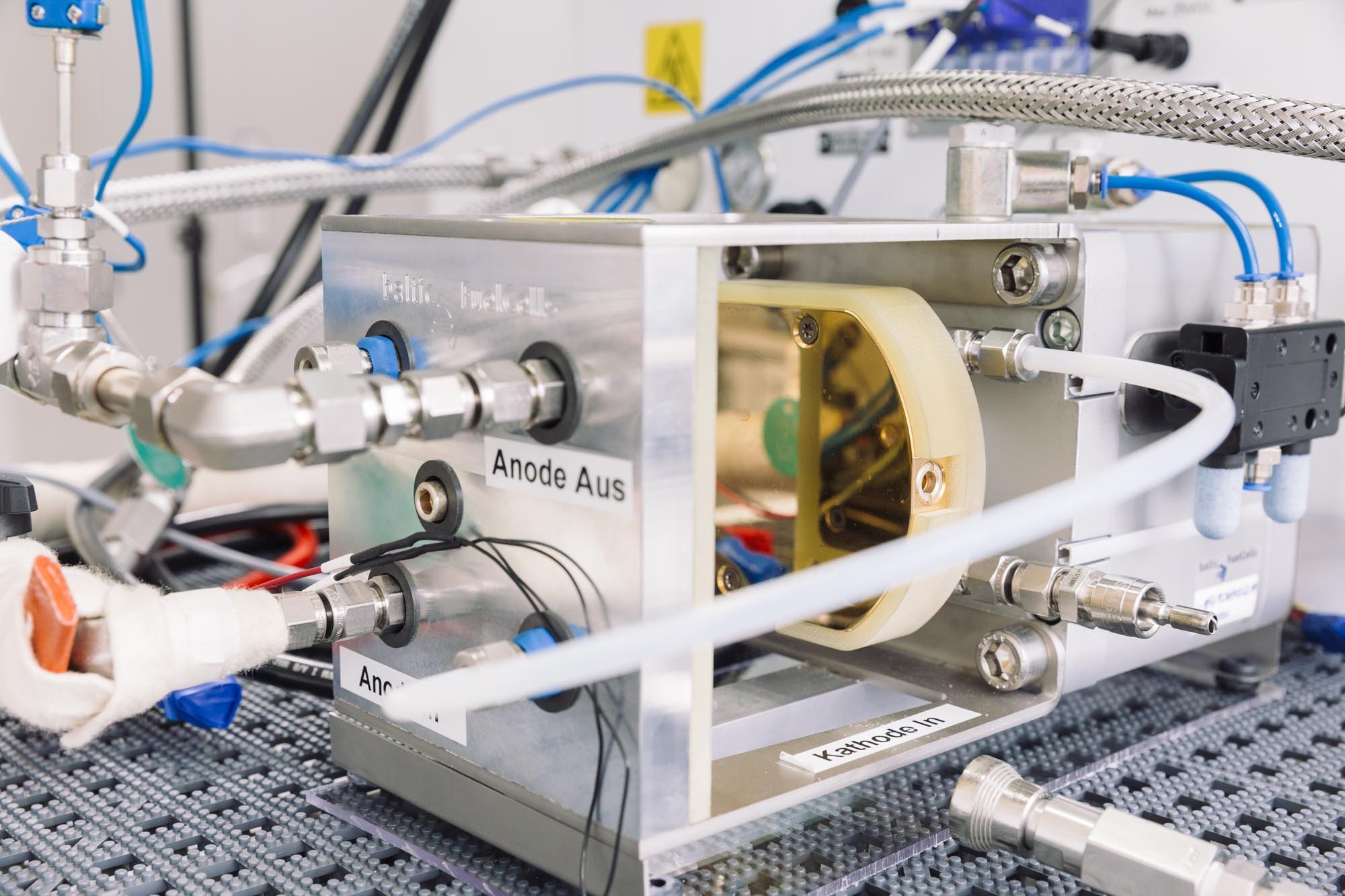Living lab researches the entire value-creation chain for green hydrogen
In Central Germany, a living lab for the generation, transport, storage, and usage of green hydrogen is to be constructed. Taking part in the planning are Siemens, Linde AG, VNG Gasspeicher GmbH, ONTRAS Gastransport GmbH, Terrawatt Planungsgesellschaft GmbH, DBI Gastechnologisches Institut gGmbH Freiberg, Uniper, 50Hertz Transmission GmbH, as well as the Fraunhofer Institute for Microstructure of Materials and Systems IMWS. With ‘GreenHydroChem Mitteldeutsches Chemiedreieck’ (GreenHydroChem Central German Chemical Triangle), the project partners are taking part in the idea competition ‘Living lab for the energy revolution’ from the Federal Ministry for Economic Affairs and Energy (BMWi) and today submitted their project outline for the subprojects ‘Electrolyzer Leuna’ and ‘Energy Park Bad Lauchstädt’ to the responsible project owner Jülich (PtJ).

With the project ‘GreenHydroChem’, the activities of HYPOS e.V. are being developed further. Since 2013, the association has been pooling and coordinating the competences of economics and science nationwide with regards to green hydrogen in Central Germany and beyond.
Living lab encompasses the entire hydrogen value-creation chain
While numerous projects pertaining to the possible uses of green hydrogen already exist, among others, in the mobility sector, the entire value-creation chain including the generation of green hydrogen has, up to now, only been considered theoretically or in its individual aspects. Here, GreenHydroChem is setting out to represent the entire value-creation process in the Central German region, which offers ideal conditions with its chemical triangle.
As part of a systematic approach including three subprojects, the basic concept of ‘GreenHydroChem’ encompasses the intelligent linking of largescale electrolysis (manufacturing), the hydrogen pipeline (transport), the hydrogen cavern (storage), and the respective bulk recipients (usage) of green hydrogen. To accomplish this, the partners want to utilize and expand the already existing infrastructure in Central Germany. Furthermore, the respective electricity capacities from renewable energies are also available both in the grid and through a direct connection to a wind park in Bad Lauchstädt. The use of the facilities in a way that is beneficial to the grid and to the system is to be tested. The control area of 50 Hertz with a current share of renewable energies of more than 56%, as well as this particular location with its technical grid characteristics make the conditions in this region extremely ideal.
Up to 140 megawatts in electrolyzer capacity
To go into detail, the project involves the construction of large-scale electrolyzer facilities at the Leuna location, with a capacity of up to 100 megawatts, as well as at Bad Lauchstädt, with a capacity of up to 40 megawatts, and a facility for the conversion of carbonic residues, in addition to the use of a cavern storage facility in Bad Lauchstädt with a gas distribution system connection to the existing hydrogen pipeline system in Central Germany. In this way, green hydrogen can be distributed to potential customers, for example, to refineries in Leuna. The cavern storage facility, with a capacity of 50-million cubic meters, ensures continued supply in order to bridge periods of windstill and maintenance measures carried out on the electrolysis facilities.
Up to 91 percent fewer greenhouse gas emissions
The project partners want to develop and implement the living lab by 2024. If implementation is successful,‘GreenHydroChem’ will make a substantial contribution to the energy revolution, as well as to the development of the Central German economic region through sector coupling of the industrial value-creation chain with renewable electricity generation. The green hydrogen generated in this way will reduce the resulting greenhouse gas emissions by up to 91 percent.
Keyword »Living lab«
A living lab of the energy revolution will be an innovative and practical experiment environment. It will provide the opportunity to gain experience in scientific preparation and the establishment and operation of the necessary industrial facilities and to positively shape the field of tension between innovations, regulatory instruments, and social acceptance in a way that is future-proof. The BMWi supports these special experimental spaces through the 7th energy research program.
Here you can watch the image film "Germany's Next Generation Energy Hubs", in which the Fraunhofer IMWS was involved.